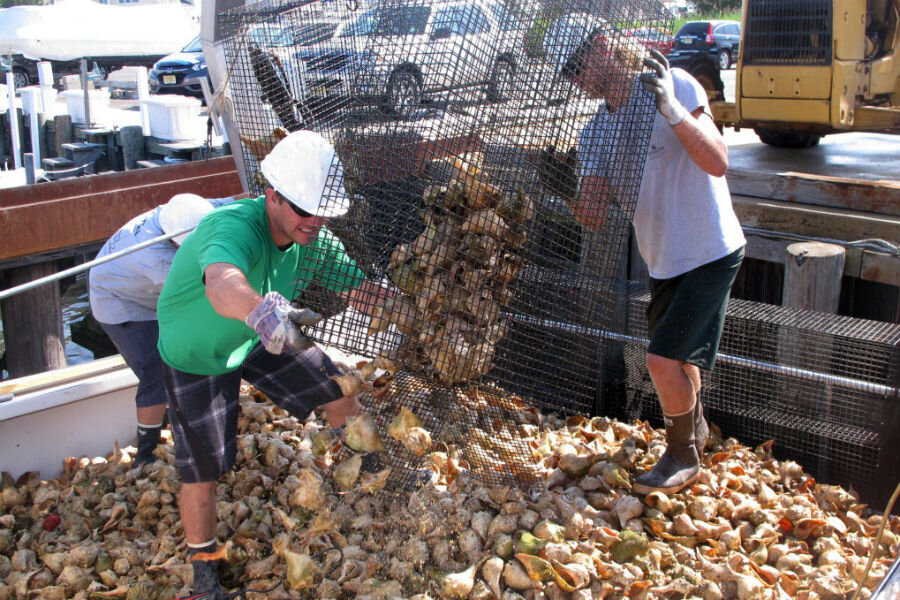Why scientists are trying to rebuild oyster colonies
Loading...
A series of small-scale restoration efforts are underway for a species that most Americans don't even realize needs saving: oysters.
A 2011 study published in the journal BioScience declared wild oysters "functionally extinct," as "oyster reefs are at less than 10 percent of their prior abundance in most bays ... and ecoregions" and "lack any significant ecosystem role."
In past centuries, that ecosystem role has been a significant one: besides tasting good, oysters also improve water quality – a single oyster can filter up to 50 gallons of water a day – and protect coastlines by functioning as speed bumps to thwart waves during storms.
According to the National Oceanic and Atmospheric Administration, 120 million pounds of oysters were brought ashore in Chesapeake Bay in 1880; that number had shrunk to 1 or 2 million by 2008.
The dramatic reduction is due to a combination of pollution, development, over-harvesting and disease, say biologists. As Rona Kobell reported last year for Yale Environment 360:
Louisiana once supplied most of the United States’ oysters, but Hurricane Katrina and the Deepwater Horizon oil spill have slashed the state’s oyster production. The Pacific Northwest was the U.S.’s second-largest oyster supplier, but ocean acidification is hurting those populations. In Florida, Apalachicola Bay oyster production has fallen by two-thirds because of freshwater diversions.
This gradual journey to functional extinction went largely unnoticed by most people, as the population of edible farmed oysters hasn't been affected.
Additionally, "the loss of oysters tends to get ignored because most people have forgotten how abundant they once were," said Michael Beck, a marine biologist from the University of California, Santa Cruz, to the Independent.
But around the country, a series of small-scale efforts to rebuild or strengthen oyster colonies, funded primarily by government grants and volunteer donations, are underway by those who haven't forgotten. Projects are either currently in process or have been completed in a range of places across the US, including San Francisco Bay, Puget Sound near Seattle, New York Harbor and the Hudson River, Rhode Island, the Carolinas, Florida and the other Gulf Coast states, New Hampshire, and Chesapeake Bay in Maryland and Virginia.
These efforts take several different forms, depending on the area. Some involve dumping shells onto the seabed, where free-floating oyster seeds attach to them; others pre-load the shells with oyster seedlings before depositing them at a reef site. Other projects transport mature oysters to new sites from pre-existing colonies.
The leaders of these efforts say they hope to prove that wild oysters can make a comeback, paving the way for restoration projects of a larger scale.
"Like a lot of things it is far easier to take things apart than to put them back together again," said Rob Brumbaugh, restoration director for the Nature Conservancy, to the San Francisco Chronicle. "We used to have a lot of services provided by oyster reefs that we really do need, so we should double down on our oyster reef restoration. It's a process, a journey, that we need to keep on."
This report contains material from the Associated Press.








